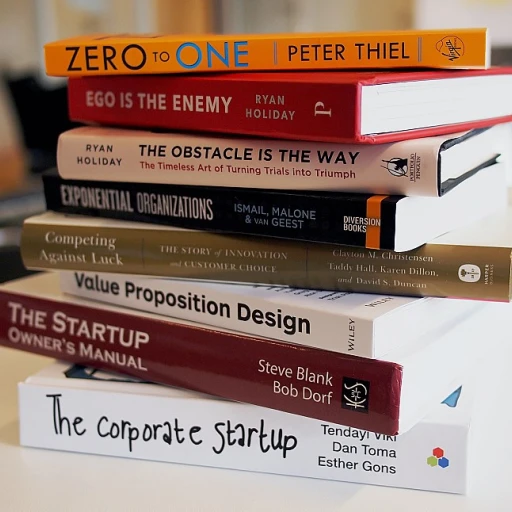
Balancing innovation and cost: the CEO's challenge
Juggling innovation and cost
It's a tightrope walk, isn’t it? CEOs often find themselves in a tricky spot when trying to spark innovation without burning through the budget. It's so easy to get caught in a spending frenzy, believing that innovation requires deep pockets. But guess what? That's not always the case.
An enlightening study from Harvard Business Review found that companies leading in innovation often spend less than their competitors, focusing instead on utilizing their resources smartly. This tells us it's not about the amount spent; it's about how wisely it's spent.
The balancing act in practice
Mentioning the heavyweights, Apple and Google, you might think they splurge endlessly. Contrary to this assumption, they pour their resources into targeted areas. They focus on aligning their innovation goals with their financial strategies, making every dollar count.
Take Google’s , a policy allowing employees to spend 20% of their time on side projects. This initiative led to the creation of Gmail and AdSense, powerful innovations that didn’t break the bank but brought tremendous value.
Smart resource management for clever innovation
Remember when 3M created Post-it notes? It wasn't a major investment but a clever utilization of available resources. 3M’s culture of encouraging employee ideas and allowing room for creativity paid off incredibly well.
Beyond anecdotes, the Boston Consulting Group’s annual Most Innovative Companies report highlights that companies maintaining a balance between exploration and exploitation, like IBM and Microsoft, lead the pack. It underscores that innovation can, and should be, smartly budgeted.
Practical tips for ceos
CEOs, it’s about prioritizing your investments. Use existing technologies, leverage internal talent, and foster a culture where creativity thrives within financial constraints. Encourage teams to brainstorm cost-effective solutions and reward frugal innovation.
Innovation doesn’t have to be a budget-busting venture. It can be a smart, well-thought-out strategy that aligns perfectly with strategic value creation. Balancing innovation and cost isn't just possible - it's the hallmark of a truly resourceful leader.
Leveraging existing resources for innovative solutions
Maximize what you already have
Look, your company's got plenty under the hood already. Most folks don't think to check the attic before they go shopping for new stuff, right? CEOs can use this same principle for driving innovation without spending a fortune. It's about squeezing every last drop out of your existing resources. According to a Gartner survey, 77% of CEOs see innovation as one of their top priorities. So, let's not just dream big; let's be smart about it.
Take 3M, for example. They encourage their employees to devote 15% of their time to side projects. Sounds risky? But guess what, that's how we got Post-it notes! By using that same concept, you let the talent in your company fiddle around with ideas that could turn into the next big thing.
Then there is Target. They have been leveraging data analytics, which they already had access to, to drive personalized marketing strategies. As a result, they've seen a notable increase in customer engagement and sales.
People power: your hidden gem
Sometimes, the answer is right under your nose – your team. A study by Gallup revealed that companies with high employee engagement are 21% more profitable. When you get everyone on board with innovation, magic happens. Tap into your in-house talent pool. They know the ins and outs of your operations and can offer practical insights. It’s like crowdsourcing, but without needing a bigger boat.
Take Google’s 20% time – it allows employees to spend 20% of their work time on projects they’re passionate about. This policy has birthed some amazing Google products like Gmail and Google News.
Still unsure? Have casual brainstorming sessions or innovation workshops. Encourage folks to pitch their ideas, however big or small. Not only do you get fresh ideas, but you also boost morale.
Be flexible and adaptive
Ideas don't always fall from the sky like rain. Sometimes, they need a big nudge. Look at Zappos' culture of experimentation. They consistently explore new ways to improve customer experience using internal resources, resulting in remarkable customer loyalty and satisfaction rates.
In these workshops, encourage cross-department collaboration. When people from different areas of the business come together, they often bring unique perspectives that can drive truly innovative solutions. Everyone’s experience is a valuable resource.
If you're hungry for more ways to thrive, check out these strategies for modern retail.
Collaborative innovation: partnerships and alliances
Joining forces for innovative strides
Our world thrives on collaboration—the magic ingredient behind every major breakthrough. Just think back to how Apple and IBM buried the hatchet to churn out business apps or how Starbucks and Spotify joined forces to create a more engaging customer experience. The secret sauce? Partnerships and alliances. Take the genius behind IBM's ecosystem. They've formed thousands of partnerships globally, leveraging the collective effort to pool resources, tech, and even business wisdom. This collab-centric strategy is a powerhouse: it speeds up development, slashes costs, and pushes innovation boundaries. It's a sweet deal for businesses wanting to stay nimble without stretching their budgets. h3getting innovative with alliances/h3 John Chambers, former CEO of Cisco, once said, & All competitive advantages are fleeting. The best ones are derived from people, their relationships, and their joint innovation. & Now, isn't that the truth? According to Accenture, companies that embraced collaborative innovation saw a jaw-dropping 21% increase in their effectiveness. Why? Because when teams join hands, they share risks, reduce costs, and kickstart out-of-the-box ideas. To spice things up, let’s dive into a quick case study. In 2018, Renault-Nissan-Mitsubishi's alliance rocked the auto industry. By pooling R&D, they slashed expenses by billions and rolled out innovative electric vehicles ahead of the competition. It’s like getting magic beans, but for business profits and innovation. h3jumping on the collaboration bandwagon/ if you're a CEO worried about footing the innovation bill without breaking the bank, this is your ticket. Tapping into partnerships is like turbocharging your innovation engine without emptying the gas tank. Plus, it's not just about sticking to the tried-and-true. It opens doors to expertise, resources, and often, a fresh market perspective. Another golden example is Google’s ATAP (Advanced Technology and Projects) team. Through collaborative partnerships, they've rolled out futuristic projects like Project Jacquard (smart textiles). Instead of bearing all the costs and risks alone, Google joined hands with Levi's and voila—a market-ready innovative product. So, how can you, as a CEO, leverage this magic?- Start cultivating a mindset of openness and synergy within your team.
- Identify potential partners who share your vision and complement your existing capabilities.
- Think long-term. It’s not just a one-time wonder but a continuous journey of mutual growth and innovation.
Measuring the ROI of innovation initiatives
Tracking innovation impact: key metrics
When you're looking at the bottom line, ROI isn't just a buzzword; it's a necessity. To evaluate if innovation makes financial sense, CEOs must track specific metrics. It's like football – you need to know the score to see if your play is working.
First things first, check your profit margins. Increased costs aren't bad if they lead to greater revenue. According to a 2022 McKinsey report, 84% of executives believe innovation is crucial to growth, but only 6% are satisfied with their innovation performance metrics. If you're seeing higher operational costs but no corresponding revenue bump, it might be time to rethink your strategy.
Next, monitor employee engagement. A Gallup study found that engaged teams show a 21% boost in productivity. Happy, engaged employees often bring fresh ideas to the table and drive innovative practices forward. Just remember, high turnover can hinder innovation, so keep those engagement scores high!
Customer feedback and satisfaction
Customer feedback is another goldmine for measuring innovation's effectiveness. Are your clients raving about new products and services, or are complaints piling up? Look at net promoter scores (NPS). According to Bain & Company, companies with the highest NPS outgrow their competitors by more than twice the average rate.
Don't be shy about asking for feedback. Use surveys, social media listening, and direct client communication. Sometimes, the customer's insight can point out flaws or provide inspiration for enhancing services even further.
Benchmarking against competitors
You can't measure your success in a bubble. It's essential to see how you measure up against industry rivals. Competitive benchmarking involves comparing your outcomes with others in your field. According to Harvard Business Review, a company that gains a one-point lead in market share can see a 0.5% rise in ROI.
What are others doing that's working? Where are they falling short? Use these insights to tweak and tailor your innovation initiatives. Adaptation is key. If a strategy isn't working, pivot rather than pushing forward blindly.
Quick tip: Incorporate real-time data analytics in your benchmarking process. Modern tools can track competitor activity on social media, news sites, and financial reports instantly.
Balancing short-term and long-term gains
Finally, CEOs need to strike a balance between immediate results and future growth. A study by PwC revealed that 77% of CEOs believe that investing in innovation will yield long-term success, yet they are often pressured to deliver quick wins.
Short-term gains might look good on paper, but sustainable innovation focuses on long-term solutions. Combining data from quarterly reports with insights from studies focused on sustainable growth can provide a clearer picture of which innovations are worth the investment.
In short, measuring the success of innovation initiatives requires a blend of various metrics. From observing profit margins and monitoring employee engagement to gathering customer feedback and benchmarking against competitors, aligning short-term achievements with long-term strategies is the way to go.














